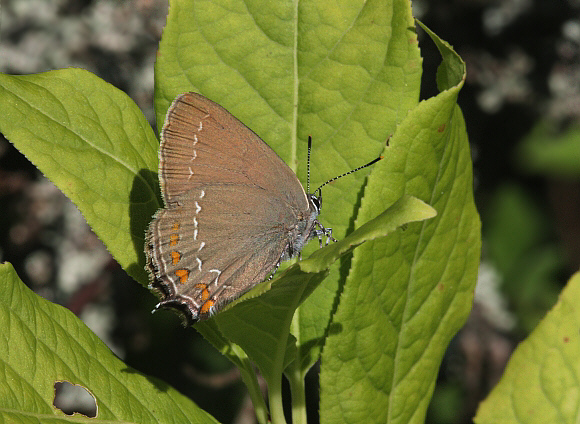 Sloe Hairstreak Satyrium acaciae, Aggtelek hills, Hungary – Peter Bruce-Jones
Sloe Hairstreak Satyrium acaciae, Aggtelek hills, Hungary – Peter Bruce-Jones
Introduction
There are 64 described species in the genus Satyrium, which has at various times been known by the invalid synonyms Neolycaena, Nordmannia, Pseudothecla and Strymonidia. The genus occurs across the temperate, sub-arctic and subtropical regions of the northern hemisphere.
There are 7 species in Europe – acaciae, ilicis, esculi, spini, w-album, pruni and ledereri; of which only w-album and pruni occur in Britain.
Satyrium acaciae is found in northern Spain, and east across most of south and central Europe but is absent from southern Italy and the Mediterranean islands. Beyond Europe it’s range extends to Turkey and southern Russia.
Habitats
This species is found in a wide variety of habitats including woodland clearings and glades, field edges, dry scrubby heathland, sub-alpine woodland / meadow mosaics and alpine grasslands. It occurs at altitudes between sea level and about 2000m.
Lifecycle
The adults are single-brooded, emerging in June and July.
The eggs are laid singly or sometimes in two’s or three’s in the forks of blackthorn stems. They overwinter, and hatch the following February or March.
The plump green caterpillars feed on blackthorn Prunus spinosa, resting openly on the foliage, against which they are superbly camouflaged. In common with other Lycaenidae they are almost certainly involved in a mutually beneficial relationship with ants.
Adult behaviour
The butterflies are strongly attracted to yarrow flowers Achillea, and also to ox-eye daisy, thyme, stonecrop and bramble.
